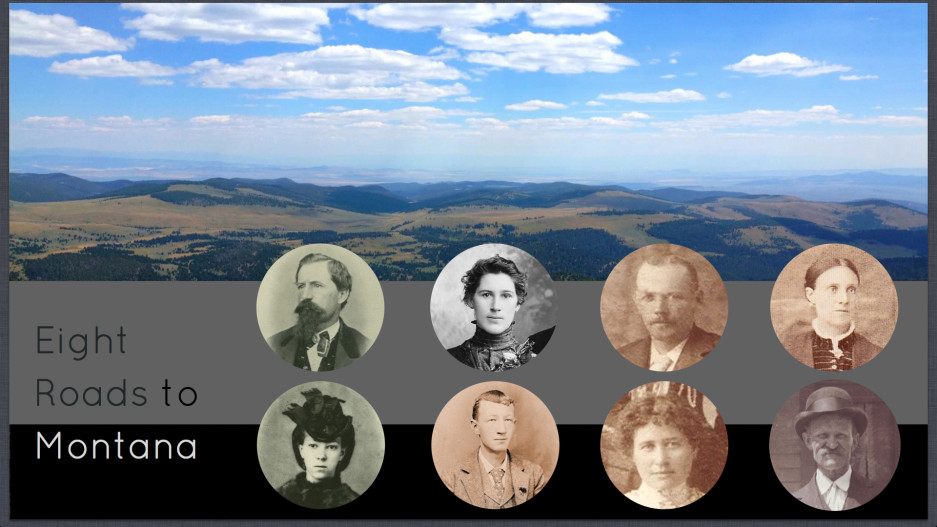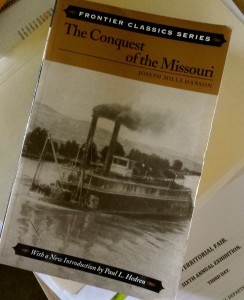Vast herds [of buffalo], extending away to the horizon line of the north-ward bluffs, were moving slowly toward the river, grazing as they came. On arriving at the river’s brink they hesitated and then, snorting and bellowing, plunged into the swift-running current and swam to the opposite shore. When the [steamer] Stockdale reached a point nearly opposite the Elk Horn grove, excitement rose to a high pitch on board, for the buffalo became so thick in the river that the boat could not move, and the engines had to be stopped. In front the channel was blocked by their huge, shaggy bodies, and in their struggles they beat against the sides and stern, blowing and pawing. Many became entangled with the wheel, which for a time could not be revolved without breaking the buckets. As they swept toward the precipitous bank of the north shore and plunged over into the stream, clouds of dust arose from the crumbling earth while the air trembled with their bellowings and the roar of their myriad hoofs . . . it seemed almost as if they would overwhelm the boat. No one on board cared to shoot among them, for the sight of them was too awe-inspiring . . . Several hours elapsed before the Stockdale was able to break through the migrating herds and resume her journey, and they were still crossing when at last she passed beyond view.
Hanson, Joseph Mills. “Blockaded by Buffalo.” The Conquest of the Missouri: The Story of the Life and Exploits of Captain Grant Marsh. Mechanicsburg: Stackpole, 2003. 97-98. Print.
I believe that three of my great grandparents and two of my great great grandparents experienced at least one trip on a Missouri River steamer – probably sometime between the years 1867and 1879. And so I found myself feeling quite curious about what that trip might have been like.
My great grandmother, Mary G. Rumping Schenk Schaffer Riordan, wrote several passages in her journal which reference her 3-month long trip in 1879 – which you can read here on my blog dedicated to Mary’s journals, etc. – but since she was only a one-year-old child at the time, I assume her writings were based on memories shared by her mother, Eva Specht Rumping. And anyway, her journal passages just left me wanting more!
While searching the Internet recently, I came across this book, The Conquest of the Missouri: The Story of the Life and Exploits of Captain Grant Marsh. The book, originally published in 1909, was written by Joseph Mills Hanson based largely upon information provided him by Captain Marsh himself. (Captain Marsh is primarily known as the pilot of the steamer Far West, which carried the wounded soldiers from the Little Bighorn disaster to North Dakota.) However, the book contains much fascinating information relevant to steamboat travel from St. Louis to Ft. Benton, during the time period my ancestors would have made their arduous trips to the Montana territory via the Missouri River.
It’s quite long, at just over 400 pages – but I would definitely recommend the read if this topic is something you’re curious about.


